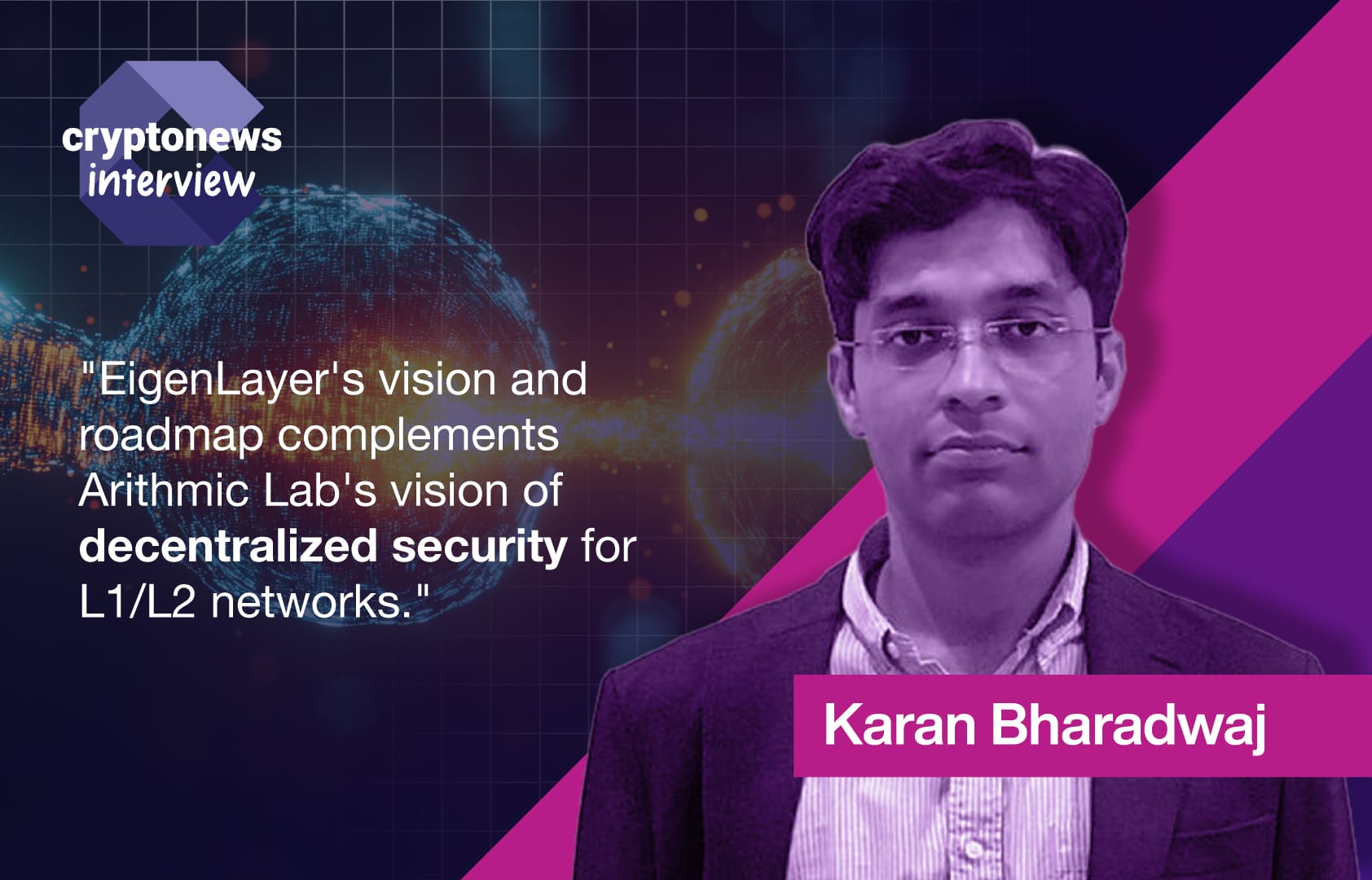Last updated:
 Why Trust Cryptonews
Why Trust Cryptonews

Earlier this week, Arithmic Labs revealed its ambitious plans to unify liquidity between Bitcoin and Ethereum networks by 2025, following a strategic partnership with EigenLayer, a widely known Ethereum restaking protocol.
This partnership seeks to bridge Ethereum with over 25 Layer 1 (L1) and Layer 2 (L2) networks, transforming liquidity flows across these ecosystems.
In an exclusive interview with CryptoNews, Karan Bharadwaj, CEO of Arithmic Labs, provided insights into how this collaboration will impact crypto holders, boost yields, and improve the performance of blockchain networks through Arithmic’s Verification Systems (AVS).
Boosting Yields Through Restaking and Liquidity Flows
Bharadwaj emphasized how the partnership would benefit Ethereum users by increasing yields through the integration of Arithmic’s AVS.
“An average crypto holder that is part of the Ethereum and EigenLayer ecosystem brings liquidity for AVSs. This liquidity interacts with the Arithmic AVS, leading to higher yields,” Bharadwaj explained.
“While not immediately visible, these yields will grow as Arithmic AVS operators contribute to multiple L1/L2 networks, generating proportional rewards over time,” he added.
The Arithmic CEO also confirmed that staking will initially support ETH, BTC, and MATIC, with plans to expand to over 25 L1/L2 networks by the time the Arithmic mainnet is live in 2025.
He noted that future partnerships will be guided by the network’s technical capabilities, community strength, and throughput volumes to ensure a robust multichain staking pool.
Arithmic’s AVS and the Partnership with EigenLayer
A major component of this partnership is the introduction of Arithmic’s AVS, which is designed to enhance transaction speeds and security for decentralized networks.
Bharadwaj explained that their zkVM Soma, built on the Lasso & Jolt paradigm, has shown superior performance with faster prover times, verification times, and smaller proof sizes compared to other systems.
“EigenLayer’s expertise in ETH restaking and their deep understanding of staking made them a natural partner for Arithmic,” Bharadwaj elaborated.
As for staking amounts, he highlighted that the minimum requirements would be announced closer to the mainnet launch, but the goal is to keep (re)staking accessible to both institutions and retail users.
Future Prospects and the Role of Zero-Knowledge Technology
Looking ahead, Bharadwaj expressed confidence in the role of zero-knowledge (zk) technology in reshaping blockchain ecosystems.
He highlighted Arithmic’s zkVM as an important advancement, with potential applications beyond just security and transaction efficiency.
The company also plans to extend zk technology to other AVS through its partnership with EigenLayer.
“While zkML [zero-knowledge machine learning] isn’t yet suited for large-scale AI training, there’s a significant opportunity for zk-tech to enhance AI AVS in inference applications,” he explained.
In July, Bharadwaj spoke to CryptoNews about Arithmic’s efforts to unlock liquidity across both the Bitcoin and Ethereum networks through native restaking.
By integrating Bitcoin and Ethereum Layer 2s (L2s), Arithmic seeks to simplify liquidity flows and streamline bridge processes, creating a more seamless user experience.
As Bitcoin Layer 2s gain prominence, Bharadwaj acknowledged the challenges of liquidity fragmentation, bridge complexity, and scalability.
However, he believes these challenges can be addressed by focusing on interoperability standards that allow liquidity to move fluidly between Bitcoin and Ethereum L2 ecosystems.
Bharadwaj added, “Building a strong community around L2 advancements will also be essential to addressing these challenges and driving broader adoption within the crypto space.”
















